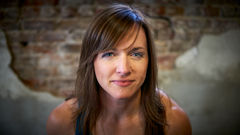Think back to the first time you ever walked into the gym. It can be intimidating trying something for the first time, right? Now, imagine walking into a place where no one looks like you or identifies with you. I think we can all relate to this sentiment to some degree, regardless of sexuality or identity.
Similar to how sexuality and the ways you portray yourself to the world can be personal and individualized, so can the way in which you decide to come out to friends, family, clients and employers. Being a personal trainer is just that: it’s personal. The same with being a health coach or being a part of any profession that requires developing a close relationship with your clients—there is a level of transparency that is needed in order to foster a relationship built on trust. Trust is a keystone to the relationships built in the health and fitness profession.
However, when your identity is not in alignment with that of your clients’ or employers’ identities, that may impact the relationship you have with them and present some challenges. As a member of the queer community, I think it is important to explore the topic of identity as it relates to members of the lesbian, gay, bisexual, transgender, queer, intersex and asexual (LGBTQIA+) community working in the fitness industry.
A Note on Intersectionality
In a 2016 TED talk entitled “The Urgency of Intersectionality,” Professor Kimberlé Crenshaw discussed the topic of intersectionality, which is the overlap of multiple categorizations of identity and how they impact the experiences of marginalized groups (such as race, gender and sexuality). An individual with multiple intersecting identities may face various types of discrimination at different times and in different places, which makes the way they experience and move through the world unique. Crenshaw outlined that when there is no name for a problem, you cannot see a problem. When you cannot see a problem, you cannot solve it.
This is why words matter. Humans are complex, and words help to identify and name something to better understand it, as well as to help someone be their authentic self. So, the long list of letters in LGBTQIA+ mean something to someone, even if they may not mean something to you.
While you can never claim to fully understand someone’s life or experience, this is where empathy plays an important role. Empathy is what can bring a level of understanding to one another’s shared and unique experiences. By sharing the stories of others, hopefully this can create a better space for understanding and empathy.
How do you handle coming out to your clients or employer?
Coming out is a very personal experience and is likely done when you feel safe and supported. By allowing clients and employers to get to know you on a personal level first, you let them see you for who you are outside of your sexuality. Opening someone’s eyes to your personal life and who you are outside of your sexuality may give them permission to truly explore their own opinions about what, if any, impact your personal life has on theirs (which is likely minimal).
Heather Hamilton, MS, an ACE Certified Personal Trainer and Health Coach with Barpath Fitness, says it best: “I feel the healthiest when I am able to be 100% myself. I know that my clients feel this way, too.”
What challenges have you faced as a part of the LGBTQIA+ community?
Mary Hale-McDonald, MS, MPH, CPT, with UNC Wellness Centers, provides an interesting perspective on how legislation can impact members of the community in their places of work. She explained, “In 2016, HB2 was introduced [in North Carolina, limiting the] trans community to be able to use the bathrooms that corresponded with their gender identity. Hidden in that bill was a piece stating that any state institution could terminate employment for any LGBTQIA individual for no reason. I work for the state and feared for myself.” Fortunately, Hale-McDonald’s Human Resources department made a public statement about their stance against the bill, and HB2 has since been overturned.
Hamilton added, “I am cisgendered [so] I face less challenges than my friends who are trans or who identify as non-binary and present differently. I have many friends who have been negatively affected by discrimination, bullying, harassment and even sport and competition rules because of their identity. While I have dealt with some harassment in this industry due to my identity, the way I present to the world means that I will still face much less adversity in this industry than my friends.” Note: Someone who is cisgender has a gender identity that corresponds with the sex they were assigned at birth.
How can the health and fitness industry do more for the LGBTQIA+ community?
Health coaches and exercise professionals can attempt to understand ways to help LGBTQIA+ individuals (especially those who are trans) feel more comfortable in a fitness setting. Familiarize yourself with pronoun usage and the ways your LGBTQIA+ clients want to present themselves, so you are clear on what to say and how to support and empower them.
The industry “needs to realize that health and identity are connected. We cannot be well if we cannot be authentically ourselves. If we really want to help our clients, friends, family and other coaches, we need to align our practices in a way that invites all people to participate. We need to ensure that people know that fitness is for everyone. Not just through representation, marketing and language (though this is important), but through our own thoughts and actions,” says Hamilton.
“There are more LGBTQIA+ coaches than one might think, so sharing is important to let others know they aren’t alone. If other professionals in the industry can feel comfortable enough to speak up and share their stories, it will become more of a norm,” said Mollie Martin, MSc, CSCS, ACE Certified Pesonal Trainer. Martin has also written for ACE about The Importance of Supporting the LGBTQ+ Community.
What do we do now?
Looking at the panel of ACE professionals interviewed in this article, we are all white-appearing, cisgendered women. Non-binary folks will have a different experience than us, as will Black trans or intersex individuals, and so on. So, while many of us here may not have extensive experiences facing challenges in our professional lives, trans, non-binary and others in the LGBTQIA+ community may have different experiences—and recognizing that fact is essential.
If we can all work to foster a safer space for individuals to present themselves with authenticity, then more LGBTQIA+ exercise professionals can come forward because they feel more open about presenting their true selves. And, the more LGBTQIA+ individuals that come forward, the more diverse and representative the fitness space will be.
This would be a win for all involved, because we should all want health and fitness for everyone, regardless of sexuality and race. While representation matters, creating a safer space for all is what should matter first. How will you help to create a safer space for all, including LGBTQIA+ individuals?
To learn more about this topic, watch this ACE panel discussion on LGBTQIA+ in the Fitness Industry, which features ACE Board of Directors member, Fred Hoffman.
Or, check out this course to explore how you can strengthen communication with people from diverse backgrounds and demonstrate empathy and understanding: Taking Action with ACE: Practicing Equity, Diversity and Inclusion as a Health and Fitness Professional (worth 0.3 ACE CECs).




 by
by 






 by
by